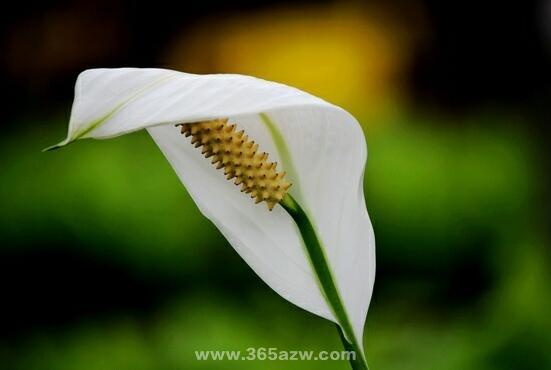Introduction to Culture methods of White Crane Taro
White caltrop is what we often call white palm. There are many ways to breed this kind of plant. How to breed white caltrop is a detailed introduction for everyone today.

White caltrop, alias: white palm, bract leaf taro, smooth sailing. Latin name: Spathiphyllum kochii Engl. et Krause 。Araceae is a perennial herb, white crane taro green leaves, white buddha, very fresh elegant, is the world's important ornamental flowers. It is also an expert at filtering indoor exhaust gases, dealing with ammonia, acetone, benzene and formaldehyde. At the beginning of the 20th century, it began to be used for potted plant viewing. By the 1980s, it had become very popular in Europe. It regarded white crane as a flower of innocence, with the meaning of purity, peace and tranquility.
Is White Lotus poisonous? Although it can be grown indoors, its leaves and stems are poisonous and it belongs to the family Araceae. Most of the plants in the Araceae family are poisonous, so as long as you don't eat them, you won't be poisoned, but families with children still have to be careful. To prevent children from eating by mistake.
The optimum temperature for the growth of white caltrop is 22~28℃, 24~30℃ from March to September, 18~21℃ from September to March of the next year, and no less than 14℃ in winter. When the temperature is lower than 10℃, the growth of plants is hindered and the leaves are vulnerable to freezing injury. White crane is afraid of strong light exposure, summer shade 60%~70%, but long-term lack of light, it is not easy to bloom. 500 lux is appropriate.
The breeding method of white caltrop
White caltrop is commonly used in plant division, seeding and tissue culture propagation.
division propagation
May to June is best. Remove the whole plant from the pot, cut the rhizome from the base of the plant cluster, each cluster has at least 3~4 leaves, and restore it in the shade after subplanting.

seed reproduction
After flowering, seeds can be obtained by artificial pollination. Seed should be sown immediately after harvest, germination temperature is 30℃, germination 10~15 days after sowing. If the germination temperature is too low, the seeds are easy to rot.
tissue culture propagation
In the late 1970s and early 1980s, tissue culture propagation of white calla began in the United States and Germany. Inflorescences and lateral buds were inoculated on MS medium supplemented with 10 mg/l 6-benzylaminoadenine and 2 mg/l indoleacetic acid after sterilization. Callus and adventitious buds were produced after 40~45 days. Adventitious buds were transferred to MS medium supplemented with 2 mg/L indoleacetic acid and induced to root in 30~40 days.
Disease Control of White Crane
hazardous blade
Common bacterial leaf spot disease, brown spot disease and anthracnose damage leaves, 50% carbendazim wettable powder 500 times spray. In addition, root rot and stem rot occurred. In addition to paying attention to ventilation and reducing humidity, 75% chlorothalonil WP 800 times solution was used to control them.
scale insects
Sometimes scale insects and red spiders harm, with 50% marathon emulsifiable concentrate 1500 times spray control.

control methods
The method is to wipe with rags, spray 500 times solution of wind oil or washing powder, spray methamidophos, Shijiening, Guoguang Jieke and so on to control, the effect is good. General poor ventilation is the main reason for inducing this pest, scale insects suck the juice of flower plants, generally do not move, wipe away that is, death, for the most environmentally friendly method, but must wipe clean. Note that after spraying, dead scale insects cannot fall. Ventilation management should be strengthened in the future, which is the best way to prevent diseases and insect pests.

The above is the introduction of white crane cultivation, I hope everyone can like today's article.
Related
- Wuhan Hospital Iron Tree Blooming Result Was Instantly Frightened by the Gardener Master
- Which variety of camellia is the most fragrant and best? Which one do you like best?
- What is the small blue coat, the breeding methods and matters needing attention of the succulent plant
- Dormancy time and maintenance management of succulent plants during dormancy
- Minas succulent how to raise, Minas succulent plant pictures
- What are the varieties of winter succulent plants
- How to raise succulent plants in twelve rolls? let's take a look at some experience of breeding twelve rolls.
- Attention should be paid to water control for succulent plants during dormant period (winter and summer)
- Watering experience of twelve rolls of succulent plants
- Techniques for fertilizing succulent plants. An article will let you know how to fertilize succulent plants.



